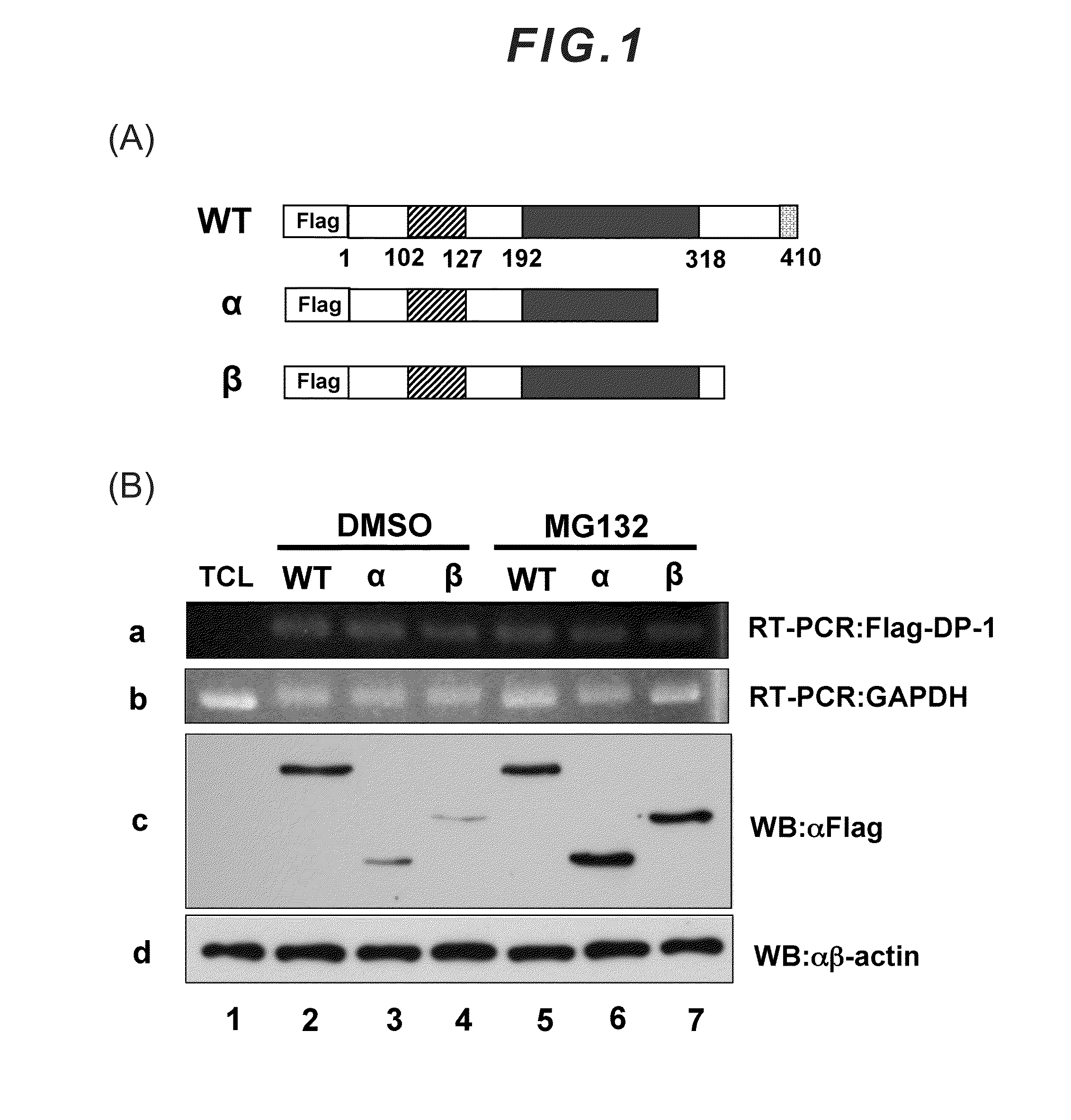Establishment of motif comprising acidic amino acid, capable of stabilizing protein in cells, and applicable to protein therapy, control of differentiation/undifferentiation of cell and antibody therapy
a technology of acidic amino acids and amino acids, applied in the field of acidic amino acid motif, can solve the problems of inconvenient administration of administered proteins, difficult to achieve the effect of enhancing the effect, and reducing the frequency of administration
- Summary
- Abstract
- Description
- Claims
- Application Information
AI Technical Summary
Benefits of technology
Problems solved by technology
Method used
Image
Examples
Embodiment Construction
[0040]The DP-1 protein consists of 410 amino acids, and the sequence thereof is as follows. The underlined portion is a C-terminal acidic amino acid region of the DP-1 protein, which constitutes the proteolysis-inhibiting motif.
[0041]
makdagliea ngelkvfidq nlspgkgvvs lvavhpstvnplgkqllpkt fgqsnvniaq qvvigtpqrp aasntlvvgsphtpsthfas qnqpsdsspw sagkrnrkge kngkglrhfsmkvcekvqrk gttsynevad elvaefsaad nhilpnesaydqknirrrvy dalnvlmamn iiskekkeik wiglptnsaqecqnleverq rrlerikqkq sqlqelilqq iafknlvqrnrhaeqqasrp pppnsvihlp fiivntskkt vidcsisndkfeylfnfdnt feihddievl krmgmacgle sgscsaedlkmarslvpkal epyvtemaqg tvggvfitta gstsngtrfsasdltngadg mlatssngsq ysgsrvetpv syvgeddeed
[0042]The above sequence is registered in United States NCBI (National Center for Biotechnology Information) (NM—007111).
[0043]The motif consisting mainly of acidic amino acids in accordance with the present invention is a motif consisting mainly of glutamic acid (Glu; E) and aspartic acid (Asp; D), and the composition ratio or len...
PUM
| Property | Measurement | Unit |
|---|---|---|
| proteolysis resistance | aaaaa | aaaaa |
| permeable | aaaaa | aaaaa |
| nucleic acid | aaaaa | aaaaa |
Abstract
Description
Claims
Application Information
 Login to View More
Login to View More - R&D
- Intellectual Property
- Life Sciences
- Materials
- Tech Scout
- Unparalleled Data Quality
- Higher Quality Content
- 60% Fewer Hallucinations
Browse by: Latest US Patents, China's latest patents, Technical Efficacy Thesaurus, Application Domain, Technology Topic, Popular Technical Reports.
© 2025 PatSnap. All rights reserved.Legal|Privacy policy|Modern Slavery Act Transparency Statement|Sitemap|About US| Contact US: help@patsnap.com



